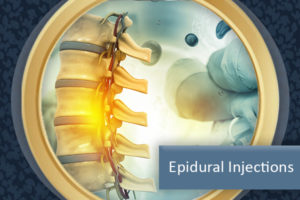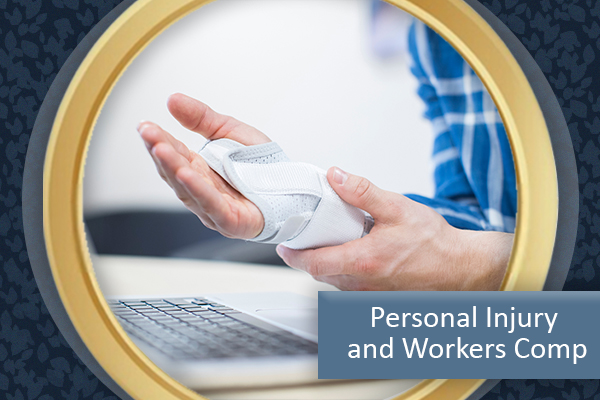 Managing pain with epidural injections of the lumbar region of the spine has been used by physicians since the early 1950’s as an effective way to help patients manage severe and chronic pain.
Managing pain with epidural injections of the lumbar region of the spine has been used by physicians since the early 1950’s as an effective way to help patients manage severe and chronic pain.
This treatment option is perfect for patients who need a way to quickly and effectively manage pain they have had trouble containing.
This pain can be a result of recent surgery, a genetic condition, or a newly developed condition as well.
These injections are perfect for treating a variety of common chronic pain areas including the back, shoulders, neck, knees, and more.
Epidural Treatment
Epidural injections help to stifle pain throughout the body by reducing the output of pain-inducing inflammatory agents that are being prepared to circulate to their target destinations.
Typically, a solution containing cortisone along with a local anesthetic and/or saline is used in conjunction with the pain-reducing steroid.
- The steroid (cortisone) is normally injected as an anti-inflammatory agent. Inflammation is a common component of many lower back conditions and reducing inflammation helps to reduce pain.
- Lidocaine is a fast-acting local anesthetic used for temporary pain relief. Bupivacaine, a longer lasting medication, may also be used.
- Saline is used to diluting the local anesthetic or as an agent to dilute the chemical or immunologic agents that promote inflammation, helping to reduce the amount of pain experienced.
An epidural can be very beneficial for a patient during acute episodes of pain that make therapy much more difficult to complete. These treatments can provide sufficient pain relief to allow a patient to progress with rehabilitative stretching and exercise programs. If the initial injection is effective for a patient, they may have up to three treatment sessions in a one-year period.
 Epidural steroid injections deliver medication directly to the source of pain generation in the body; the base of the spine. As a contrast, oral steroids and painkillers have a much less direct impact and may also be less tolerable and bring with them unwanted side effects, not to mention the risk of addiction that accompanies every back pain treatment regimen.
Epidural steroid injections deliver medication directly to the source of pain generation in the body; the base of the spine. As a contrast, oral steroids and painkillers have a much less direct impact and may also be less tolerable and bring with them unwanted side effects, not to mention the risk of addiction that accompanies every back pain treatment regimen.
Additionally, since the vast majority of pain stems from inflammation, an epidural steroid injection can help control local inflammation while also flushing out unnecessary inflammatory proteins and chemicals from the local area that may contribute to and exacerbate the pain you are experiencing.
Several conditions could prevent a patient from qualifying for treatment:
- Local or systemic infection
- Pregnancy (if fluoroscopy, a type of X-ray, is used)
- Bleeding problems, blood thinners (Coumadin, etc.), or patients with a bleeding condition.
Epidural steroid injections should also not be performed on patients whose pain could be related to a spinal tumor. If suspected, an MRI scan should be done prior to the injection to rule out a tumor. While these steroid injections are very powerful, they are a safe and effective way to treat your chronic pain at the source. Chronic pain does not have to rule your life, and these scientifically-backed treatment methods can help you to beat your pain and do the things that make you happy every day without being bogged down by pain.
Common Questions about Epidural Injections
What are epidural injections?
Epidural injections help patients manage severe and chronic pain in the lumbar region of the spine.
Lumbar pain can impact people’s work, family, and social lives and make it difficult for them to do what they enjoy. Epidural injections from All-Pro Orthopedics & Sports Medicine aim to provide relief from acute episodes of pain, so you can enjoy your life more and improve your quality of life.
How do epidural injections work?
The purpose of epidural injections is to relieve pain by reducing the output of inflammatory agents that cause pain throughout the body.
Epidural injections include a pain-reducing steroid (cortisone), a local anesthetic, and a saline solution to dilute the chemicals. When a steroid is injected into the epidural space, the steroid can protect the nerves from irritation and inflammation, and nerve compression can be relieved.
Epidural injections are used to deliver medication directly to the base of the spine, where the pain is generated. Epidural injections can help control local inflammation while flushing out unnecessary inflammatory proteins and chemicals that may contribute to and exacerbate your pain since the vast majority of pain is caused by inflammation.
What are the usual causes of lower back or lumbar pain?
Low back pain is most commonly caused by mechanical issues and soft-tissue injuries, including disc damage, compressed nerve roots, and improper joint movement.
Some conditions that may cause lower back or lumbar pain:
- Degenerative disc disease
- Herniated discs
- Spinal stenosis
- Spinal osteoarthritis
Can I get epidural injections?
Epidural injections of the lumbar spine are generally safe, but certain complications and side effects can occur. In addition, some conditions cannot receive treatment with epidural injections, such as:
- Local or systemic infection
- Pregnancy
- Bleeding problems, blood thinners
- Pain related to a spinal tumor
How would I know if I need an epidural injection?
Here at All-Pro Orthopedics & Sports Medicine in Florida, we evaluate each patient individually to determine the best plan of action to address your lumbar pain more effectively. Creating a customized treatment plan for lower back or lumbar pain depends on its intensity, duration, and cause. We also suggest activities to relieve back pain and best impact your lifestyle.
What should I do after an epidural injection?
After regaining sensation in your limbs, you don’t need to rest in the sense of remaining still. However, you should avoid certain activities immediately following an epidural injection, such as:
- You should avoid driving within 12 hours of receiving your epidural injection.
- Heat should not be applied to the injection site for at least three days.
- Wait at least 24 hours before getting back to your regular daily routine.














